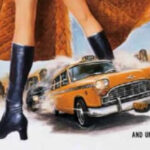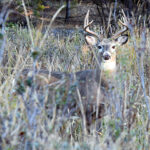Home »

KIJHL alum Reid and Chakrabarti keys to NCAA Spartans
Once foes in the Kootenay International Junior Hockey League (KIJHL), Cam Reid (Kimberley Dynamiters) and Luke Chakrabarti (Osoyoos Coyotes/Creston Valley Thunder Cats) just completed their first season as teammates for the Vermont State Castleton Spartans in National Collegiate Athletic Association Division 3.
Reid finished his second season and has 29 points in 49 career games. In his first season with the Spartans, Reid was named the New England Hockey Conference (NEHC) Rookie of the Week. Chakrabarti completed his freshman season being named his team’s Most Valuable Player after posting 22 points in 22 games. He was also a 2x NEHC Rookie of the Week winner.
The KIJHL spoke with both alums to talk about their seasons.
Luke Chakrabarti

KIJHL: What did it mean to be named your team’s MVP as a freshman?
LC: That meant a lot. There were definitely a lot of guys it could’ve gone to. Cam Reid was solid all year — he started as a forward and finished on defence and was productive the whole way through, plus strong defensively. Both of my linemates, Emmett McHardy and Andrew Stefura, were just as deserving too.
Our coach left it up to a team vote, so it means a lot that the guys picked me. As a freshman, winning MVP is a huge deal. I just hope I can carry that momentum into next season.
KIJHL: What was your first year of NCAA Division III hockey like?
It was a lot of fun — and a bit of an unknown. You don’t watch a ton of NCAA DIII hockey in Canada, so I didn’t really know what to expect.
After talking to Cam and seeing how he transitioned from the KIJHL to college, I aimed to put up just over half a point per game. It took me a few games to find my stride, but once I adjusted to the speed and physicality — playing against guys who are 24, 25-years-old — I found my rhythm.
It’s fast, physical, and skilled hockey — especially in our conference. Challenging for sure, but I really enjoyed it.
KIJHL: What were the biggest adjustments from junior hockey to NCAA?
LC: The speed is a big jump. Guys are on you fast, and you have to make decisions quicker — and you have to make plays quicker.
And the physicality is next level. You can’t just brush off hits like you might in junior. Playing against older, stronger players means you’ve got to be ready to take hits.
KIJHL: How has college life in Vermont been?
LC: It’s been awesome. Castleton is a small school, and most students are athletes, which makes for a tight-knit campus community. Everyone supports each other — teams go to each other’s games, you know pretty much everyone around.
It reminds me of Creston and other small KIJHL towns. And Vermont itself feels like a mini British Columbia — green, mountainous, unpredictable weather. I love being outdoors, so it’s been a great fit.
KIJHL: How did playing in the KIJHL prepare you for college hockey?
LC: The KIJHL gave me confidence — and that’s everything. When I’m confident, I play my best.
My last two years in Creston let me work on my shot, my hockey IQ, and the little details that make a difference. Playing strong teams like Kimberley, Fernie, and Columbia Valley, in all kinds of rink sizes, helped me grow a lot.
At the NCAA DIII level, it’s the little things that separate players — and I really think my time in the KIJHL helped me focus on that.
KIJHL: What did you enjoy most about your time with the Creston Valley Thunder Cats?
LC: I enjoyed all of it – the chippiness. I loved the rivalries — especially with Kimberley and Fernie. That competitive edge, playing teams multiple times a season, brought out the best in me.
I also really loved the community in Creston and the team culture. We still keep in touch, and getting to play with my brother for two seasons made it even more special. I’m really thankful for the time I had there.
Cam Reid

KIJHL: In what areas do you feel you became a better player?
CR: I’d say defensively. Playing against older, stronger, smarter players in college forces you to adjust. My first year, the game felt a bit faster and guys were making plays quicker.
This year, having that experience behind me helped. You start to pick up on the reads and what plays are coming. I felt more confident out there and a lot more comfortable with the speed and size of the game.
KIJHL: Luke was mentioning at the start of the year that you played a bit of forward?
CR: Yeah, I played eight games up front. Then just before Christmas break, I switched back to defence. I’d actually played forward the last couple of games of my freshman year and played pretty well, so they wanted to try it again. They were looking for a defensive-style centerman who could still make plays, and they thought I could do that. In the end, I fit better on the defensive side of the puck so that we just switched right back.
KIJHL: Luke said he loved playing on a line with you, that you guys really clicked well?
CR: Yeah, Luke’s a really smart player. We think the game in a similar way, so it made it easy to play together. He’s fun to watch — super skilled and talented. That always makes it more fun out there.
KIJHL: What were the things that you carried over to your second season after your first year?
CR: Just the experience of being new. Last year, I came in not knowing anyone. That’s different from junior. But it pushed me to go out, meet new people, be open and outgoing. I think that helped me grow a lot off the ice too, and it’s something I’ve carried with me into this season — just trying to be a good person, stay on top of things, and keep getting better every day.
KIJHL: Looking at your profile, were you inspired by Brandon Tanev (Winnipeg Jets) to do a funny profile photo?
CR: Yeah, there’s a couple of guys on the team last year too that tried, but the coach shut it down. Then we finally snuck one in there and I was just the guy that got it in. It was just meant to be funny and give everyone a laugh.
KIJHL: What have you enjoyed about playing at the NCAA D3 level?
CR: The competition, for sure. It’s really strong. The national champion has come out of our division the past two years. There’s no easy games. I like that — you have to show up, be ready, and push yourself. I’d rather be tested every night than play in games where you can take a shift off.
KIJHL: How did your time in Kimberley help you make a successful transition?
CR: My last two years in Kimberley, when I was 19 and 20, were huge. The coaches taught me a lot — not just about hockey, but life too. They helped me mature, taught me how to carry myself, and just made a big impact on who I am today.
Photos by Vermont State University Castleton
KIJHL







